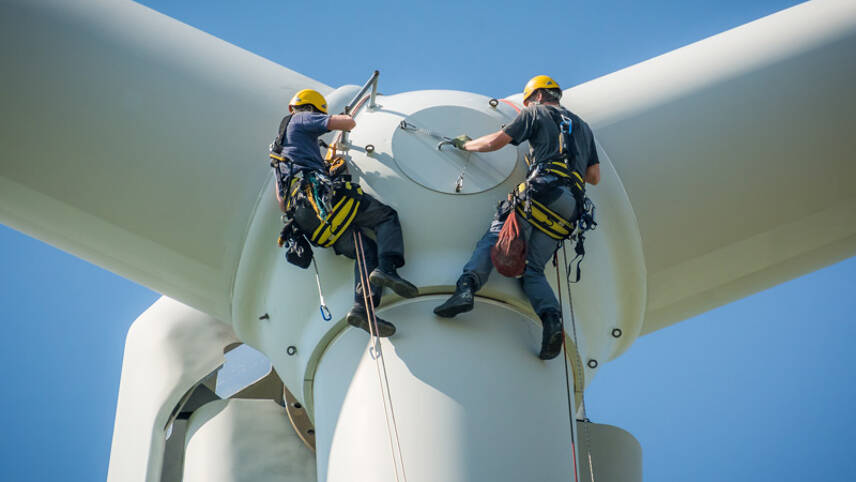Register for free and continue reading
Join our growing army of changemakers and get unlimited access to our premium content

The IEA has confirmed that utility-scale solar and onshore wind are the cheapest forms of electricity generation in most nations
The Agency has today (6 December) published its annual report on renewables for 2022 and this is the headline takeaway. The report looks at rates of deployment of renewable energy technologies in the electricity, transport and heat sectors since 2001 and makes projections through to 2027.
In the context of the energy price crisis, driven largely by skyrocketing natural gas prices due to major exporter Russia’s war in Ukraine and the global response, the IEA has tracked a steep uptick in renewable energy investment this year in many markets – from both public and private finance.
The report forecasts that renewables will account for 90% of global capacity additions in the electricity sector from now to 2027, with solar being the biggest growth area. It concludes that, by 2025, renewables will overtake coal as the largest source of electricity production worldwide. It concludes that utility-scale solar and onshore wind are the cheapest options for new electricity generation in the vast majority of national markets.
It also notes that many nations with net-zero targets are setting clearer goals on increasing renewables and phasing down coal this decade. China, the US, India and the EU are all named as energy markets which are changing their policy and regulation. The EU’s $300bn RePowerEU package, first tabled in May, was introduced in a bid to end Russian fossil fuel imports by 2027. It includes accelerated targets on energy efficiency improvements and renewables investment to help achieve this. The US, meanwhile, prides the Inflation Reduction Act (IRA) as the largest climate investment package in history, with huge subsidy packages for technologies such as electric vehicles, renewable electricity generation and green hydrogen.
“Renewables were already expanding quickly, but the global energy crisis has kicked them into an extraordinary new phase of even faster growth as countries seek to capitalise on their energy security benefits,” said the IEA’s executive director Fatih Birol. Birol added that the current energy crisis “can be a historic turning point towards a cleaner and more secure energy system”.
The report also lays out an accelerated case in which renewable power capacity grows a further 25% on top of the main forecast. It bears noting that neither scenario aligns with the IEA’s net-zero by 2050 pathway.
Challenges on the horizon
Nonetheless, the report does detail several major challenges facing renewable energy deployment – even in some of the world’s most mature markets.
There is, for example, an entire section exploring whether the EU will meet its RePowerEU goals, given that the bloc was already off track to meeting the previous, less ambitious target.
The IEA is forecasting that the share of renewables in the EU’s electricity mix will reach 55% by 2026, whereas the European Commission estimates that a 69% share will be necessary to meet the package’s goals. The IEA recommends that the EU and its member states work to “rapidly” streamline planning and permitting processes to reduce development timelines. It also believes that some member states could improve the design of their auction schemes and dedicate more resource to promoting them. Additionally, the IEA would like to see the EU supporting the deployment of smaller renewable arrays, including rooftop solar on homes and businesses.
Away from electricity, the report warns that the EU is experiencing “sluggish” growth of clean energy technologies in the transport and heating sectors, which may well continue this decade. In the IEA’s main case, renewables’ share of transport energy demands grows from 9% at present to just 15% by 2027. In the accelerated case, the proportion stands at 20% by 2027. The EU’s goal is 29% by 2030.
As for heating, the IEA acknowledges that Europe is not alone in facing challenges. Its report notes that the cost-competitiveness of heat pumps in markets where fossil fuel alternatives have not yet been banned is still not strong.
The US’s IRA is also not without challenges in deployment. Europe is currently up in arms about the scheme, which would offer tax breaks to American firms but not EU multinationals. It argues that this could break international competition requirements.
Another challenge explored in the report is a potential “feedstock crunch” for the biofuel industry, with demand over the next five years set to skyrocket at rates that exceed the capacity to secure more supply. The IEA explains that the demand for biofuels is approaching the supply limits for fuels derived from wastes and residues. The crunch may be smaller or later for crop-based biofuels, but the IEA acknowledges that the increased focus on food security and biodiversity may limit expansion of supply here in the longer term.


Please login or Register to leave a comment.